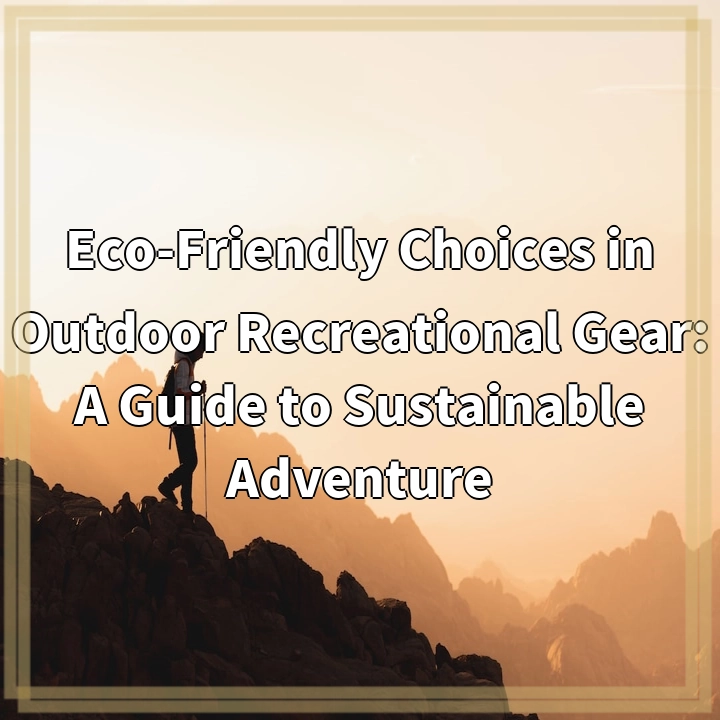
What it is:
Eco-Friendly Choices in Outdoor Recreational Gear refers to making conscious decisions when selecting gear and equipment for outdoor adventures, with the aim of minimizing negative environmental impacts. It involves choosing products that are made using sustainable materials, produced using ethical manufacturing practices, and designed to reduce waste and resource consumption.
Real-World Problems:
While outdoor recreational activities provide numerous benefits, they also have significant environmental consequences. Here are some of the real-world problems associated with outdoor recreational gear:
1. Resource Depletion:
Traditional outdoor gear production often involves the extraction of raw materials, such as petroleum-based plastics and metals, which can contribute to habitat destruction and resource depletion. This can lead to soil erosion, deforestation, and water pollution.
2. Carbon Footprint:
The manufacturing and transportation of outdoor gear contribute to greenhouse gas emissions, thereby exacerbating climate change. From the extraction of raw materials to the production processes and the shipping of products, each step adds to the carbon footprint of the gear.
3. Chemical Pollution:
Many outdoor products, such as waterproof jackets and tents, are treated with chemicals that can be harmful to the environment and human health. These chemicals can leach into the soil and water systems, impacting local ecosystems and potentially disrupting the balance of delicate natural habitats.
4. Waste Generation:
The outdoor industry generates a substantial amount of waste, including product packaging and end-of-life gear disposal. Many discarded outdoor products end up in landfills, where they release harmful chemicals and contribute to environmental degradation.
5. Limited Durability:
Sustainability is also affected by the durability of outdoor gear. Many products are not designed to withstand the rigors of outdoor adventures and may need to be frequently replaced, leading to increased consumption and waste.

Solutions to Eco-Friendly Choices in Outdoor Recreational Gear:
Addressing the real-world problems associated with outdoor recreational gear requires a proactive approach. Here are some solutions to promote sustainability in this area:
1. Sustainable Materials:
Opt for gear made from sustainable materials, such as recycled or upcycled fabrics, organic cotton, and plant-based alternatives. These materials minimize resource consumption and reduce environmental impact.
2. Ethical Manufacturing:
Support companies that prioritize ethical manufacturing practices, such as fair wages and safe working conditions. Look for certifications like Fair Trade or bluesign® that ensure responsible production processes.
3. Responsible Disposal:
Instead of throwing away old gear, explore recycling and take-back programs offered by manufacturers. Some companies have initiatives in place to properly recycle or repurpose used gear, minimizing waste sent to landfills.
4. Product Longevity:
Choose high-quality gear designed to withstand rugged use and harsh conditions. Durable products tend to have a longer lifespan, reducing the need for frequent replacements and decreasing overall waste generation.
5. Minimalist Approach:
Consider adopting a minimalist mindset when packing for outdoor adventures. Opt for multi-purpose gear that serves multiple functions, reducing the number of items needed and preventing unnecessary purchases.
6. Education and Awareness:
Spread awareness about the environmental impact of outdoor gear and the importance of sustainable choices. Encourage fellow outdoor enthusiasts to make conscious decisions and highlight success stories of eco-friendly gear brands.















